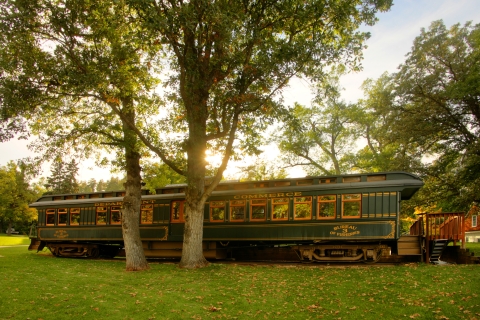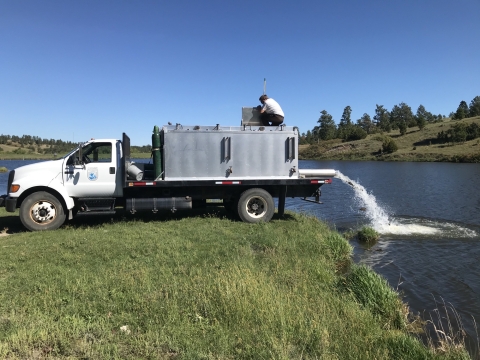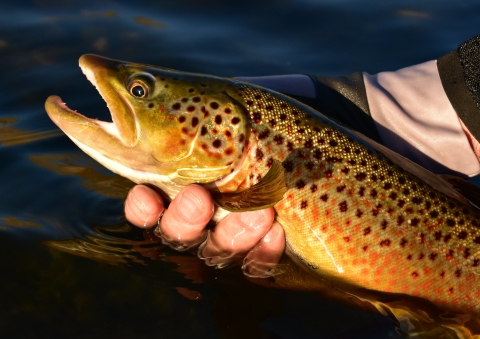What We Do
Still rearing and stocking trout for tribal and military waters through cooperative efforts, the hatchery is also has a museum, multiple historic structures to tour and is on the National Register of Historic Places. Additionally, the hatchery houses the National Fish & Aquatic Conservation Archives that serves to protect and preserve our nation’s fishery records and artifacts for educational, research, and historic purposes. With over 160,000 visitors and 14,000 volunteer hours annually, the facility also strives to provide interpretive and educational programs for the public.
Management and Conservation
The next time you go fishing, you might just catch a fish that was raised at the D.C. Booth Historic National Fish Hatchery. Since 1871, National Fish Hatcheries have been responding to conservation challenges affecting America’s fish and other aquatic species. Producing fish continues to be an irreplaceable tool in managing or restoring fisheries along with habitat conservation. In doing so, we help provide recreation opportunities to America’s 34 million anglers who spend $36 billion annually in pursuit of their favored pastime.
D.C. Booth Historic National Fish Hatchery produces 60,000 catchable size (12 to 18 inch) trout annually. The trout are stocked annually in reservoirs and lakes for recreational fishing on military in tribal lands in South Dakota and eastern Montana.
Our Services
As the aquatic habitat changes from natural or human influences, the natural production of fish declines. Aquaculture is one of the many management strategies used by biologists to help replenish the populations for years to come. In recent years, D.C. Booth Historic National Fish Hatchery has provided between 50,000 and 80,000 catchable size fish (14" to 20") annually to support fishing on the Indian Reservations of South Dakota and eastern Montana.
Our Projects and Research
National Fish Hatcheries raise fish and other aquatic species – like crayfish and mussels - to help restore and sustain important fish and other aquatic species for the benefit of the American people. Freshwater mussels play very important roles in our rivers and lakes filtering the water and creating habitat for fish and aquatic insects fish like to eat. With declining fish populations and declining freshwater mussel populations becoming prevalent across the world, fish hatchery operations are important than ever.
The U.S. Fish and Wildlife Service (Service), D.C. Booth Historic National Fish Hatchery (D.C. Booth) is part of a regional effort to reduce or eradicate unwanted fish populations, such as non-native brown trout in certain waterways. D.C. Booth is partnering with Idaho Game and Fish and the South Dakota McNenny State Fish Hatchery on this new research to eradicate non-native trout via double YY chromosome Brown trout. This 50 year-old technology is being used to develop fish populations whose offspring can only produce males. These males have two YY chromosomes rather than the XY arrangement. By stocking YY-male hatchery fish into a body of water with an undesired fish in it (such as a non-native trout out-competing native
trout in certain areas) could change the ratio to all males within a few generations and thus cause them to die out.






